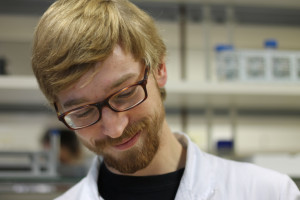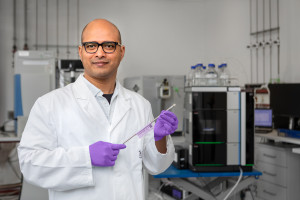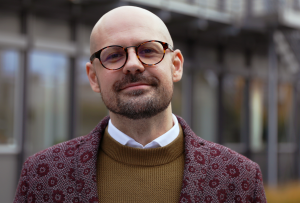Dortmund, 6th October 2021
From molecular biology to proteogenomics - an analytical approach that combines information on genomics, proteomics and transcriptomics: During his doctoral thesis, Bernhard Blank-Landeshammer developed a de novo peptide sequencing method at ISAS that can be applied in many ways. His proteogenomic method makes it possible to identify peptides in tissue samples using mass spectrometry.
The 31-year-old molecular biologist was able to contribute the analytical method to the initiative 'Cancer Moonshot' to find and measure point mutations in tissue samples from colon cancer patients. The initiative, launched in 2016 by US President Joe Biden, aims at speeding up cancer research. For this purpose, ISAS collaborates with research institutions from North America on proteogenomic methods to improve research on the causes of cancer and to develop new therapies for precision medicine.
Method allows analyses for cancer & climate research
Blank-Landeshammer's method is not only suitable for cancer research, but also for climate research. In cooperation with the Leibniz Centre for Tropical Marine Research (Leibniz-Zentrum für Marine Tropenforschung, ZMT) in Bremen, he has used his method to study foraminifera, single-celled marine organisms. The organisms provide geoscientists with much information, for example on water temperature, salinity or the pH-value. "With the help of proteogenomic analysis, it is possible to measure the cellular stress response of the foraminifera to the increased ocean temperatures as a result of climate change", explains Blank-Landeshammer.
What happened after the doctorate at ISAS?
Working on his doctorate, Blank-Landeshammer worked in the research group Proteomics (Department of Bioanalytics) from April 2015 to December 2019. After his time at ISAS, Blank-Landeshammer returned to his native home Austria in 2021. He is now working at the Centre of Excellence for Food Technology and Nutrition at the Fachhochschule Wels.
(Bianca Weber)

Bernhard Blank-Landeshammer completed his doctorate in the working group proteomics and developed a method to identify peptides in tissue samples using mass spectrometry.
© Blank-Landeshammer








